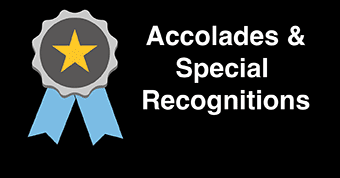Digital Accessibility
In April of 2024, the U.S. Department of Justice released a final rule with updated regulations for Title II of the Americans with Disabilities Act (ADA). This ruling provides new digital accessibility requirements for public higher education institutions.
These updated regulations mean that all digital content (webpages, documents, emails, etc.) must adhere to the Web Content Accessibility Guidelines (WCAG) 2.1. Stockton University will be expected to be in compliance with these guidelines by April 24, 2026.
Guidelines
Please consider the following points to prepare for meeting these guidelines. This list is not exhaustive but intended as a starting point for addressing digital accessibility.
Alternative Text for Images
You should always include an alternative description with any images. Here are some tips you help you create accessible and meaningful alternative descriptions:
- Explain images in the context of surrounding text
- Be mindful of users with screen readers, don’t say: “Image of,” “Picture of,” “Banner,” etc. as a screen reader already tells the user is is an image or graphic
- Some images automatically include alt text. Please remember to confirm that the automatic alt text is correct
Images Containing Text
Whenever possible, do not create images of text. Actual text is much more flexible than images:
- it can be read by a screen reader
- it can be resized without losing clarity
- it can be translated in a modern browser
- background and text colors can be modified to suit the reading preferences of users
If you do use an image that includes text that is intended to be read, alt text must be included or text should be also available so that the image is not the only source of information.
Descriptive Links
Visitors using assistive technology may navigate through links by either tabbing through them or accessing a list of links, which removes the links from the context of the surrounding text. Ensuring that links are descriptive helps everyone understand their destination and allows assistive technology users to access them more efficiently.
- Don't use ambigious links such as, "click here" or "read more"
- Don't link to full urls when possible, use meaningful link text instead
Using Headings
Headings in a document or web page make it look well-organized, give an at-a-glance view of the topics covered, help people navigate to various sections easily, and can auto-generate a table of contents for you. Use built-in title, subtitle, and heading styles.
- Use the built-in heading styles and create descriptive heading texts to make it easier for screen reader users to determine the structure of the document and navigate the headings.
- Organize headings in the prescribed logical order and do not skip heading levels.
Tables
If you are using a simple table to display tablular content, be sure to format the table with column and row headers. Split nested tables up into simple tables, and don't use tables to control layout.
Column Snippets are recommended to assist with layout on a webpage in our CMS.
Color and Color Contrast
- Check that color is not the only visual means of distinguishing a visual element
- Any information conveyed by color should also be paired with text or another type of visual indicator
- Check that foreground and background elements provide enough contrast to ensure readability. Black on a white background has a very high contrast.
Resources
Useful documentation on how best to leverage the built in accessibilty tools and features of popular tools.

